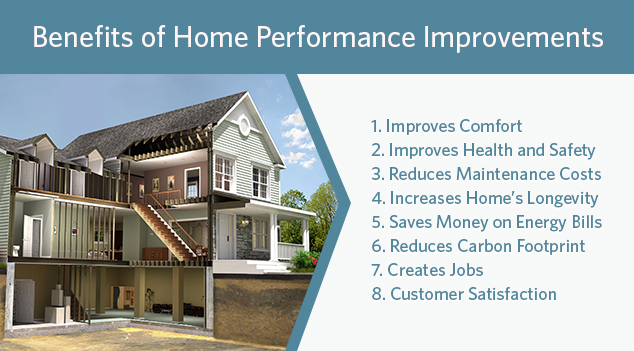
PSD has been a participant in the national Weatherization Assistance Program evaluation, so we know that program pretty well. We have also been involved in recent studies on improving the accuracy of energy modeling tools. And we have been involved in state and national policy support for whole building programs since 1990.
This study has a few more interesting angles on consumer reaction to changes in energy costs, and reconfirms that it is easy to over predict savings, and hard to recruit for weatherization, but outside that the study does not make major contributions to our understanding of residential energy efficiency. And it has some major flaws:
[box_container]
The Flaws in This Study
- First, it attempts to evaluate the over 30 year old low income Weatherization Assistance Program as if it were a climate program. It is not. So evaluating it on this basis produces results with very little meaning to the goals of the program. The program also delivers health and safety benefits, housing stabilization benefits, and jobs (it started out as a jobs program).
- Second, by focusing on energy and climate impacts only, the study makes the same mistake that many energy regulators make, that spending dollars on improvements that impact only energy makes sense. Since when does it make sense to ignore real non-energy benefits that can be leveraged by either consumer or public investment?
- Third, it seems that the study calls out the health and safety expenditures and then adds them back in when calculating the cost effectiveness of the federal investment. This means that there is a cost applied but no corresponding benefit to match it.
- Fourth, there are inappropriate efforts to generalize from this one program to other residential energy programs elsewhere. Weatherization and low income programs in general have different goals and are completely public funded. This is very different than market delivered energy efficiency.
[box_container]
A Few Good Points Arising in the Press
- I absolutely and completely agree with comments that we have to get smart about how we efficiently use resources to target climate change. And thinking about saving carbon is different from thinking about saving energy. PSD published a study in Home Energy Magazine that looks at this transition. The study is available here. The solar costs are old in this article but the concepts there are still applicable.
- It turns out that people who make investments in their homes like to be comfortable, safe, reduce maintenance costs as well as save money on their energy bill. And it is actually much easier for people to experience the non-energy benefits because they can feel them directly, and don’t have to interpret weather and their energy bills to know if they have saved energy. So it is also easier to sell non-energy benefits than it is to sell efficiency.
- The Weatherization Assistance Program was started as an employment program and a way to reduce high bill impacts in the late 70’s. Later it also became a way to stabilize low income housing that has been degrading due to lack maintenance including health risks like carbon monoxide. All of these benefits are happening in combination with the energy savings because the program uses a whole house approach and does not cherry pick high energy savings measures.
- We also have a national program for market based whole house residential energy efficiency called Home Performance with ENERGY STAR. I helped start this program. The entire idea of the program is that by combining non-energy benefits to homeowners with energy efficiency we will get increased private investment in efficiency and reduce the amount of utility and tax dollars required to address climate change in our residential sector. The biggest problem for this program is that in many regulated utility programs the economists and regulators insist on using the full combined cost of the improvements and only evaluating savings as energy savings, just like in this study! This penalizes consumer investments in non-energy benefits that result from energy improvements. Bigger investments in efficiency that are not justified by the energy savings but rather by non-energy benefits will make a program look as if it is not cost effective. This is placing the interests of the regulators in front of the interests of the consumers who are actually spending most of the money on the work. The regulators are dangling an incentive and then placing rules on how to use it that force contractors to ignore additional efficiency that a customer might spend their own money on to get things that they really care about like health.
- Contractors in the business of selling whole house energy efficiency improvements generally don’t like the whole programs regulated in this fashion because they get in the way of selling combined benefits and really serving the customer. It is much easier to get larger investments in efficiency when you do more than just deliver efficiency. But then evaluators show up and tell you that the program wasted money, even though it was the consumer making most of the investment. The fact is that efficiency is usually not the primary investment, but is along for the ride. That is an efficient way to get investments in efficiency, a better way for contractors to make money, and for customer to get the most value (as defined by the customer) for the dollar they invest in efficiency.
- Evaluation of actual savings is also critical and often happens too far after the fact for it to be effective. Accurate prediction needs to be more highly valued by the efficiency industry and we need to learn as fast as we can how to get better at investing in things that really work and in managing the work to really produce savings. Rapid feedback and savings evaluation is key. But instead of trying to address this issue, the article and the paper focused on criticizing the overall program, which is only partly an energy program. Diagnostic studies to better understand savings shortfall are important and something that I am very familiar with. We have even created ANSI standards for improving the accuracy of savings predictions (ANSI/BPI-2400) and measured the impact of their application (NYSERDA Study). But these studies don’t get the headlines.
If you want to have a big impact on improving investments in the climate, focus on how to align utility and federal program efficiency regulation and evaluation with climate change policy goals. The flawed economic cost tests currently used have huge impacts on how energy dollars are spent because they heavily affect program and incentive design and do not value non energy benefits. How we align consumer interests with climate change policy and utility policy is critical to driving increased consumer investments in efficiency, especially deeper upgrades. It would be nice if we could just raise the cost of energy to drive more investment, but then we would need the Weatherization program even more to help low income households.
Thank you for caring about our planet…..

Greg Thomas
CEO, Performance Systems Development
For more information on improving cost tests see:
http://www.homeperformance.org/policy-research/advocacy/national-efficiency-screening-project
http://www.homeperformance.org/policy-research/projects-initiatives

